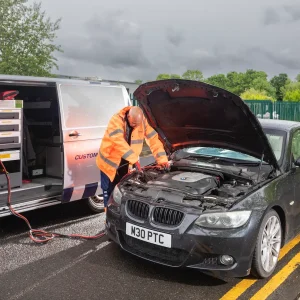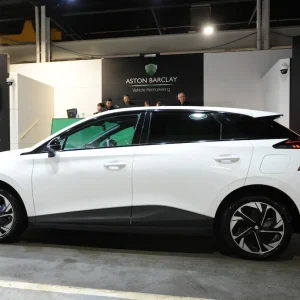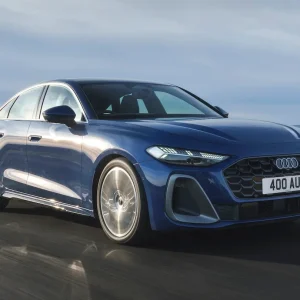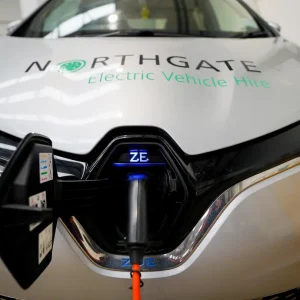For the big players in the leasing industry, there was an awful lot going on in 2012, with large-scale, recession-driven mergers and exits from the market fresh in everyone’s memories.
One year on and things are different, and all the signs are that the industry is in rude health. BusinessCar has calculated that fleet sizes have swelled by an average of 5.6% in 2013, so growth, both organic and through acquisitions, is the order of the day. That’s certainly the case at the top end, and although we still wouldn’t refer to it as a quiet year, the dust appears to be settling in the wake of big shake-ups such as Lombard Vehicle Management’s demise and the acquisition of ING by Alphabet, while what were choppy economic waters now seem to be calming.
One of 2013’s biggest headlines so far has been the tie-up between Mercedes-Benz and Leasedrive, which saw the German giant farm out its fleet management operations, among other things, to the leasing specialist, which added the likes of risk management and multi-marque deals to the manufacturers’ portfolio.
Commercial director of Leasedrive, and chairman of the ICFM, Roddy Graham, believes that this might not be the last we hear of such manufacturer/leasing firm tie-ups, and others may well follow suit in the future.
“I think the manufacturers recognise that leasing specialists do a better job of leasing cars,” he says.
“I imagine that there will be conversations about ‘should we do this ourselves or should we be looking to get specialist expertise in?'”
Graham also reckons that the industry as a whole is in much better condition than it has been for a long time.
“Three or four years ago, most of the banks were dashing for the exits and wanting to ditch non-core assets, but the ones that have stayed in are now all thinking ‘this business is core again’,” he says.
“Over the last 12 months we’ve seen stability. The banks are okay and the manufacturer-owned businesses are doing well. Privately owned businesses are doing well too.”
He adds that access to finance has made things much easier: “What has become a little bit easier is liquidity and access to finance. That was difficult in the [bad] times.
“I’ve been in this business for 30 years and I’ve never known a time when people wouldn’t lend you money for such a solid asset.”
Concerns about the Eurozone were on the lips of leasing’s captains of industry this time last year, but, despite the fact that the continental market is still far from in great shape, these have now given way to concerns that are closer to home.
ALD’s recently appointed managing director, Mel Dawson, believes that a healthier new car market in the UK heralds a tail off in the exceptionally strong used car values to which the industry has become accustomed.
“One of the few positive, indirect upsides of the recession – and the decline in new car sales – has been a subsequent shortage of de-fleeted vehicles in the used car market, which has kept prices high,” he says. “[This is] one of the key issues facing the industry over the next couple of years, and one we all have to be very aware of: the strong growth we’ve seen in the new car market following 19 consecutive rises in monthly new car sales.
“Whilst many in the motor industry will see this as positive news, and further evidence of our economic recovery, you don’t have to look back too far to see the impact a new car market of 2.4 million or 2.5 million can bring.
“How much of a ‘correction’ in values there will be is a question all lessors have to face and it is one we all need to be very aware of given our current projections of future resale values in the next few years.”
Graham agrees that a tipping point for used values is the elephant in the room, as is the possibility of a lower demand for cars going forward.
“What always worries me during a stable year is that I hope people have long enough memories to think about what will happen to used car residual values in three or four years’ time and the same goes for the new market. That worries me – we all know what happens when the market is forced up too high.
“The total mobility scenario – people are beginning to sit up and take notice. There’s less automatic demand to have a car and that’s something, as an industry, we need to have an eye on. There are more and more young, 20-something graduates living in urban areas that don’t necessarily want to have a car, so we need to look at total mobility solutions. Most good fleet management companies will cover this.”
The figures explained:?winners and losers in this year’s list
Scan our definitive list of the UK’s top 50 leasing companies and you might raise an eyebrow at some of the changes, moves and trends for 2013, so here’s the story behind them.
Within the top five Lombard Vehicle Management’s exit from leasing in 2012 added more vehicles to ALD’s fleet (it absorbed a proportion of existing contracts from the defunct firm) and, bolstered by organic growth, it has now nosed past Arval into fourth place. It has ambitious plans to crack the 100,000 mark in 2014, too.
ALD is also one of three big players to get a new boss inside the past 12 months, with Mel Dawson replacing former MD Keith Allen, Tim Porter taking over from Rick Francis at Lex Autolease (see interview, page 10) and Benoit Dilly assuming the helm at Arval in place of Bart Beckers.
A new entry within the top 10 might seem strange but Mercedes-Benz Financial Services requested to be excluded from the 2012 BC50 (presumably because of its impending deal with Leasedrive, announced in May this year). However, it submitted figures for 2013, hence the new addition at the top end.
Hitachi Capital, which has also soaked up a chunk of vehicles in the wake of Lombard’s exit, continues its march further up the top 10 into eighth place (the firm appeared in 10th spot in the 2012 BC50, but a discrepancy in its figures, revealed after publication, meant it actually ranked ninth).
Salary sacrifice is obviously working out well for mid-level leasing companies. Zenith added 4700 vehicles to its fleet, while fellow salary-sacrifice specialist Tusker added 2166 additional vehicles this year, and muscled its way into the top 20.
Notable falls in 2013 include BT Fleet, which shed 3616 vehicles and two places (although the firm fleet-manages 75,000 vehicles – far more than it takes the risk on), Peugeot Contract Hire at 1577 (but its position remained static) and BMW Financial Services with 970 vehicles and five places.
Peugeot and BMW’s reductions, along with Mercedes’ decision to outsource part of its operations to Leasedrive, suggest that the manufacturer-backed leasing market may be declining. But you only have to look at the huge strives made by Volkswagen Group Leasing (plus-10,409 vehicles) and Citroen Contract Motoring (plus-7018 vehicles) to see that it isn’t the case across the board.
Gleaning the details of the top 50 leasing companies in the country is something of a mammoth task, and despite BusinessCar’s best efforts, not every firm supplied the requested information. In these cases, an estimated figure was calculated based on the movements of the market overall, and these figures are denoted by an asterisk.
BVRLA: the view from the man at the helm of the industry body
The BVRLA’s recently appointed chief executive, Gerry Keaney, believes that stiff competition has done the leasing industry a power of good.
“It’s been an extremely positive year for our members,” he says. “Overall, the market has been very active. it’s also an extremely competitive market – and that’s a good thing. It encourages and motivates everybody.”
Despite the concerns raised by fellow industry members about the sustainability of used car values, Keaney thinks the green agenda is the one that’s of most concern: “I believe there is an issue in terms of low-emitting – sub-50g/km – vehicles. I feel progress in this area is rather slow and slower than it needs to be. I don’t really think that there’s a lot out there in terms of incentives that is really harnessing the power of the leasing industry. The decision in the Budget earlier this year has been a backward step in terms of trying to further the green agenda. Think of the number of cars my members buy each year and you could make a very big difference very quickly in terms of delivering that volume [of low-CO2 cars].
“Also, the Government hasn’t learned from other initiatives in Europe. In Norway, for example, [low-CO2 vehicles] can drive in bus lanes and get free parking in inner city areas. You need to have lifetime incentives in place rather than the blunt purchase incentives that we have in the UK.”





